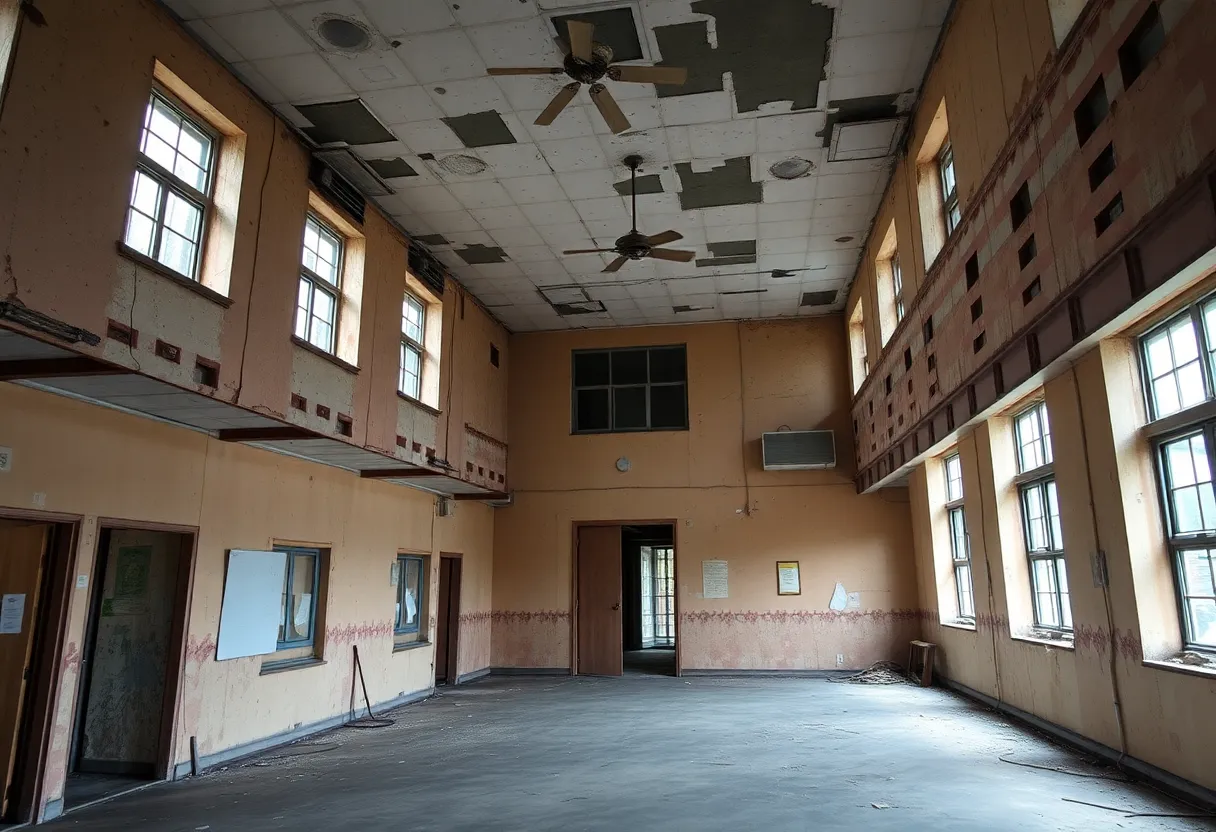News Summary
As Britain grapples with a sharp increase in asbestos-related deaths, recent reports highlight the nation’s urgent need to address the risks associated with aging public buildings. With the highest mesothelioma mortality rate globally, around 5,000 deaths annually link back to asbestos exposure, the implications for schools and workplaces are particularly alarming. Advocates are calling for comprehensive measures to remove asbestos and enforce stricter safety regulations before more innocent lives are threatened, especially children. The haunting reality of this silent killer serves as a catalyst for public awareness and action.
Asbestos Woes: The Hidden Dangers Lurking in Britain’s Buildings
As Britain faces an alarming rise in asbestos-related deaths, the grim reality of the lingering threat becomes increasingly evident. The UK has the highest mesothelioma mortality rate globally, a type of cancer that devastates the mesothelium, typically due to the inhalation of asbestos fibres. Notably, as many as 5,000 deaths each year can be directly attributed to diseases stemming from asbestos exposure, including lung cancer, mesothelioma, and asbestosis.
Long-Standing Policy Raises Red Flags
The prevailing policy within the UK has been to leave asbestos undisturbed as long as it remains intact and undamaged. However, this cautionary approach does little to address the vast number of aging public buildings, including hospitals and a staggering 21,000 schools, potentially posing significant risks. As many structures are outdated, the fear of asbestos lurking in hidden corners continues to loom large.
For many individuals, the encounter with asbestos is often cloaked in mystery. Symptoms of mesothelioma may take anywhere from 20 to 60 years to present themselves following initial exposure, leading countless diagnosed patients to question the source of their affliction only to discover that they had never knowingly interacted with this deadly material.
Heartbreaking Personal Accounts
Personal stories uncover the tragic scenarios faced by many individuals suffering from mesothelioma. Mark Smith received a diagnosis of peritoneal mesothelioma at a devastatingly young age of 36 and suspects exposure during his years in education. Others like Michelle Spencer recall potential contact during jobs in various industries while many remain baffled, knowing only that they have lived in older buildings or worked in the proximity of asbestos materials.
Another poignant case is that of Susanna Illingworth, who discovered her diagnosis while seeking fertility treatments. Her suspicions point to exposure while working as a cleaner in schools, further highlighting the risks present in educational institutions. The deep-seated issue takes on a distressing tone when considering the ongoing presence of this hazardous material in dilapidated school buildings, endangering children and teachers alike.
A Call for Action
As exposure to asbestos continues to yield dreadful consequences, campaigners are vocally demanding government action. They advocate for a comprehensive strategy aimed at removing asbestos from public buildings alongside stricter regulations to ensure safety in schools and workplaces. The Health and Safety Executive has reported significantly high mortality rates among UK teachers due to asbestos exposure, prompting urgent concern.
High mortality estimates from a recent report caution that thousands of school staff and former pupils have died from mesothelioma linked to asbestos in educational settings. Although the use of asbestos was formally banned in the UK in 1999, remnants of this hazardous material continue to exist, warranting immediate attention from authorities.
Understanding the Asbestos Threat
The fibrous mineral was widely used for its heat-resistant and insulating properties in various products, from ceiling tiles and fireproofing materials to appliances like toasters. The knowledge surrounding the health risks associated with asbestos is well documented; however, the pervasive nature of its use leaves many at risk even decades after its ban.
Beneath the surface of policy and regulation lies the stark reality faced by patients diagnosed with mesothelioma. With treatment options largely limited to slowing its progression, most individuals receive the devastating news that they may have only a couple of years to live following diagnosis. The emotional toll ripples through families, as the fight against this silent killer continues.
The Path Forward
The concerning realities of asbestos exposure stand as a clarion call for broader public awareness and support measures for those affected. The lingering questions of exposure further complicate the need for preventative action, as countless individuals discover their diagnoses without any known connection to the very substance that is now threatening their lives.
As public outcry grows, there is hope that action will be taken to alleviate the risks posed by asbestos, safeguarding future generations from its potentially lethal grasp.
Deeper Dive: News & Info About This Topic
HERE Resources
Court Victory for Mesothelioma Widow Against Defense Strategies
Ongoing Asbestos Crisis in Libby, Montana: A Deepening Tragedy
Tragic Losses Shine Light on Asbestos Crisis
Support Group for Mesothelioma and Lung Cancer in Cwmbran
February Marks Cancer Prevention Month: Shedding Light on Toxic Exposure and Cancer Risks
Revolutionary Insights into Malignant Peritoneal Mesothelioma Treatment
Asbestos Concerns Over Cheltenham’s Iconic Queens Hotel
Asbestos Crisis in UK Schools: A Silent Threat
Asbestos Crisis Uncovered: One Housing’s Shocking Record-Keeping Failures
Urgent Action Required: Asbestos Threat at Kanawaki Golf Club
Additional Resources
- The Conversation: Asbestos Exposure Continues to Be a Dire Health Risk
- Wikipedia: Asbestos
- BBC News: Asbestos-Related Deaths and Risks
- Google Search: Asbestos Health Risks
- The Guardian: Johnson & Johnson UK Lawsuit Alleged Talcum Powder Link to Cancer
- Google Scholar: Asbestos Exposure Research
- The Guardian: Is There Asbestos in Your Makeup?
- Encyclopedia Britannica: Asbestos



















